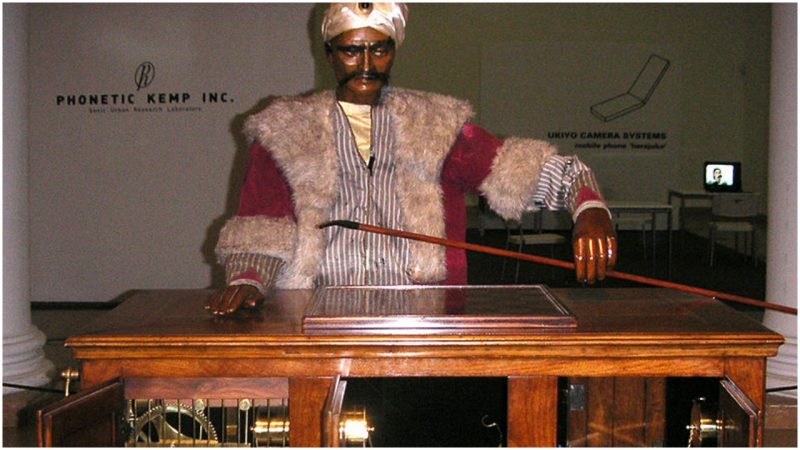February the 10th, 1996, was a significant day for both science and chess history. It was on this day that a computer beat the then-reigning chess champion, Garry Kasparov and forever changed the world.
Computer chess has been around for quite a long time and has come a long way since its beginnings in the mid-20th century. Although today computers regularly beat humans at chess, it took years of development and researches before a computer could beat the chess champion of the world.
However, the chess battle between humans and machines started centuries before the invention of the computer. Chess enthusiasts have long been fascinated by the idea of intelligent machines that could play chess against humans and that is probably one of the reasons that drove Wolfgang von Kempelen to invent the first chess-playing machine in the world – “the Turk.”
Hungarian inventor Wolfgang von Kempelen was a huge admirer of the Empress Maria Theresa of Austria. In the 1760s, Kempelen was a regular guest at the Empress’ court; there, he witnessed an illusion act performed by a French illusionist named Francois Pelletier. The illusion act impressed the Empress, and Kempelen decided to create his illusion that would capture the Empress’ attention.
In 1769 Kempelen created “the Turk,” a fake chess-playing automaton that was able to defeat skilled human opponents. The device consisted of a large wooden cabinet and a life-sized model of a human torso, head, and hands. The model was dressed in Ottoman attire, adorned with a turban to resemble an oriental sorcerer.
The base cabinet could be opened to reveal a complex mechanism, but the mechanism was a disguise: a human chess player could squeeze behind it and control the moves of the automaton. The general public became aware of this hoax in the early 1860’s, almost 100 years after the Turk was built.
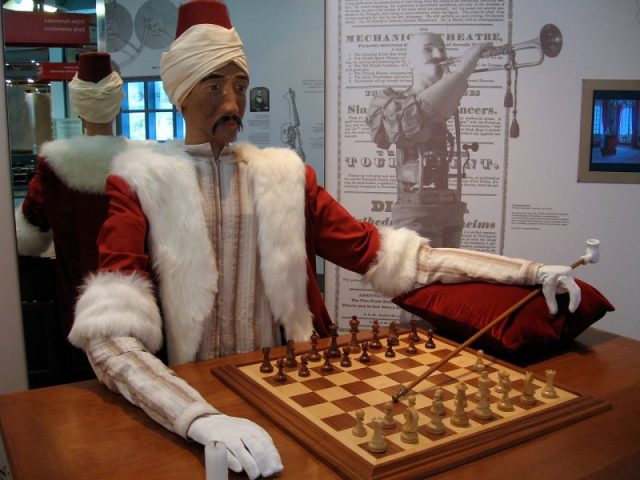
The Turk was presented to the court of Maria Theresa in 1770. It immediately gained fame and appreciation, as it defeated several noblemen that were amateur chess players, including Count Ludwig von Cobenzl, an Austrian courtier at the palace. The Turk was also praised for his remarkable ability to solve the complex chess puzzle known as the “knight’s tour.”
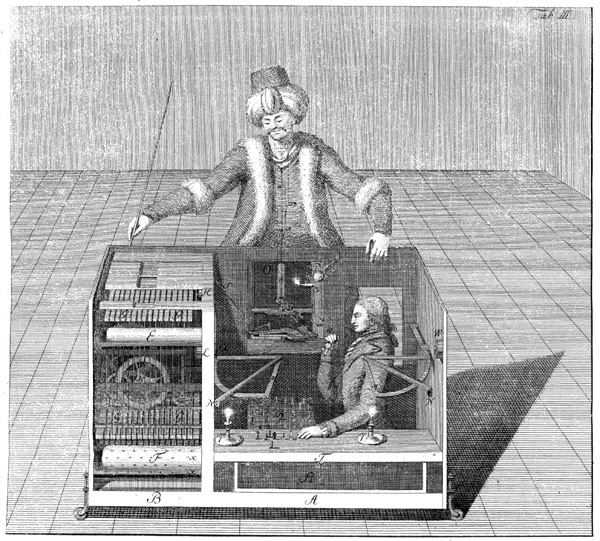
From the late 1770’s to the early 1800’s the Turk and its maker regularly toured Europe and were a huge attraction among noblemen and ordinary folk. Kempelen’s son sold the Turk to Johann Nepomuk Mälzel in 1804, several years after Kempelen had died. Mälzel learned the automaton’s secret and made it even more popular.
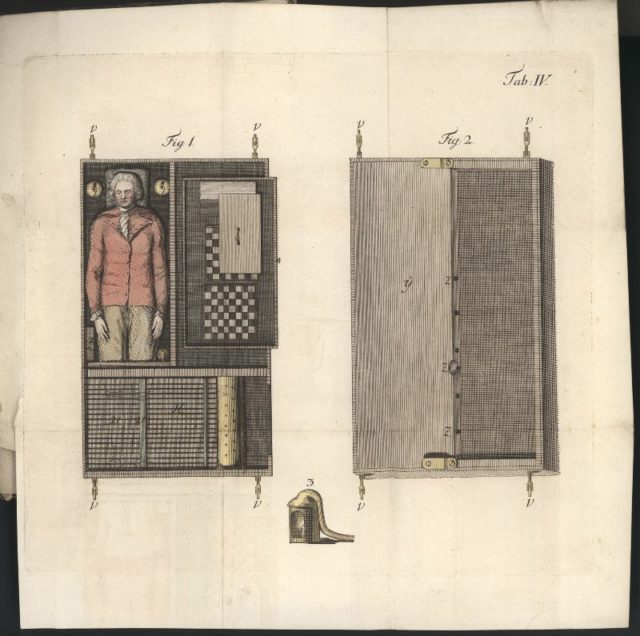
He recruited Johann Baptist Allgaier, a prominent Austrian chess master, to be the new operator of the automaton. In 1809 Napoleon Bonaparte arrived at the Schönbrunn Palace to challenge the Turk. The Turk saluted Napoleon and began the match. Napoleon played two games against the automaton and lost both of them, but was reportedly quite amused by the Turk’s skill.
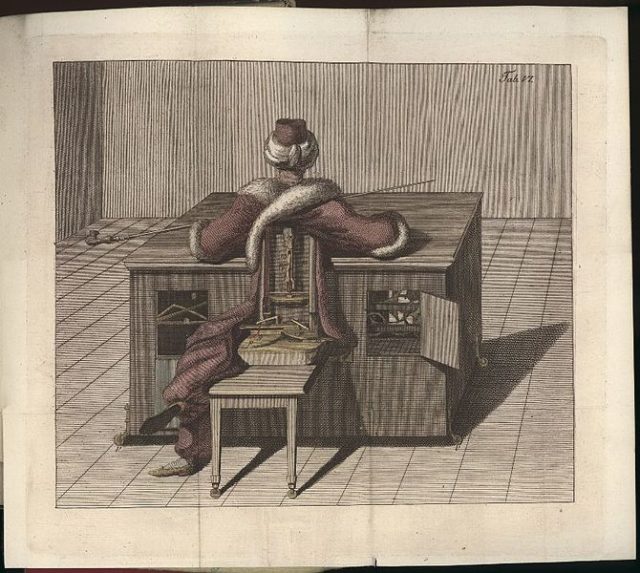
In the 1920’s Mälzel and the Turk toured the Americas and became a popular attraction. Mälzel recruited William Schlumberger, another prominent chess master, to operate the automaton. Several American inventors created their chess automatons to try and achieve the same fame as the Turk, but they quickly fell into obscurity.
The Turk was so popular that Benjamin Franklin challenged it, but he lost the match. One of the few challengers who defeated the Turk was Charles Carroll, a signer of the Declaration of Independence.
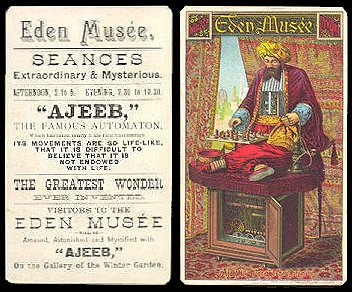
Edgar Allan Poe was so fascinated with the automaton that he wrote an essay named “Maelzel’s Chess Player” in which he attempted to explain the Turk’s immense chess skills.
Mälzel died in 1838, and a few years later the original Turk was destroyed in a fire. Nobody knew that the automaton’s immense chess skills were an elaborate hoax until the early 1860s were when Dr. Silas Mitchell revealed the Turk’s secret in his short-lived chess magazine named “Chess Monthly.”
